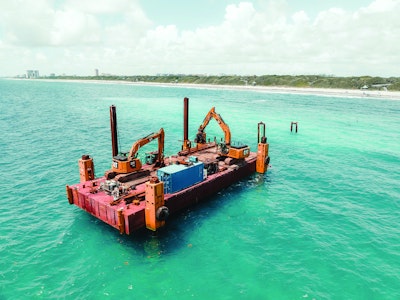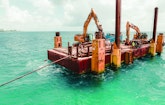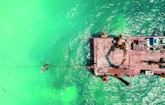
One excavator was used to break the drill pipe joints loose and unscrew them from the drill string, while the other was used to pull on the drill pipe to maintain tension.
Earth View is accustomed to challenging directional drilling jobs. But no matter the obstacles a given job may present, typically the company has a bore with entry and exit pits on land.
So the circumstances were unique when Earth View took on a job for the Gumbo Limbo Nature...









